Vale - Yaroslav Horak (1927-2020)
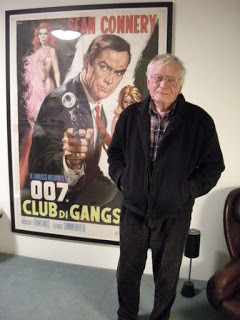 The Australian Cartoonists' Association announced on 25 November 2020 that acclaimed Australian comic-strip artist, Yaroslav Horak, had passed away after a decade-long struggle with Alzheimer's Disease. The following blog post is a revised and expanded of my article on Horak's life and work, which was published as 'Yaroslav Horak: The Man Behind the Masks', in Giant Size Phantom, no.9 (May 2019).
The Australian Cartoonists' Association announced on 25 November 2020 that acclaimed Australian comic-strip artist, Yaroslav Horak, had passed away after a decade-long struggle with Alzheimer's Disease. The following blog post is a revised and expanded of my article on Horak's life and work, which was published as 'Yaroslav Horak: The Man Behind the Masks', in Giant Size Phantom, no.9 (May 2019).Yaroslav Horak’s childhood reads like the dramatic scenario for one of the countless comic-book adventures he went on to draw for most of his adult life. He was born on 12 June 1927, in Harbin, Manchuria, where his father, Joseph, a Czech-born engineer, owned a successful manufacturing business. Joseph and his Russian wife, Zinaida, eventually joined the growing throng of European refugees who fled Harbin following the Japanese invasion of Manchuria in September 1931. Disturbed by the brutality of the occupying Japanese army, the Horak family left Manchuria on a steamship bound for Australia in July 1939.
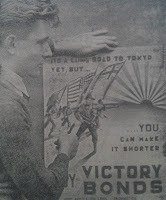 They settled in Sydney, where Yaroslav attended high school and subsequently took evening art classes at Sydney Technical College (You can read the Sydney News' 1944 profile about the youthful Yaroslav Horak - pictured at left - here). He soon turned his artistic flair to drawing comic-book features for Sydney’s thriving comic-magazine market. His first published work, “Grey Thorne, Counter Espionage Agent”, appeared in Frank Johnson Publications’ Gem Comics in 1947. Horak created his first recurring character, “Rick Davis, Special Correspondent”, as a supporting feature in H.J. Edwards’ top-selling Action Comic title. This was followed by “The Skyman”, which ran in both Action Comic and John Dixon’s Tim Valour Comic. This aviation-themed series was the first comic to carry the artist’s Anglicized by-line, “Larry Horak”.
They settled in Sydney, where Yaroslav attended high school and subsequently took evening art classes at Sydney Technical College (You can read the Sydney News' 1944 profile about the youthful Yaroslav Horak - pictured at left - here). He soon turned his artistic flair to drawing comic-book features for Sydney’s thriving comic-magazine market. His first published work, “Grey Thorne, Counter Espionage Agent”, appeared in Frank Johnson Publications’ Gem Comics in 1947. Horak created his first recurring character, “Rick Davis, Special Correspondent”, as a supporting feature in H.J. Edwards’ top-selling Action Comic title. This was followed by “The Skyman”, which ran in both Action Comic and John Dixon’s Tim Valour Comic. This aviation-themed series was the first comic to carry the artist’s Anglicized by-line, “Larry Horak”.
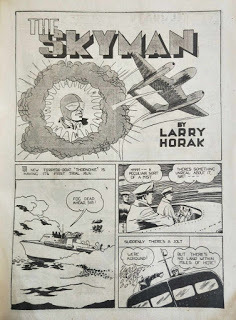
Syd Nicholls (1896-1977), creator of the much-loved Fatty Finnnewspaper comic strip, recruited Australia’s best young cartoonists to work on his small, but expansive range of “All-Australian” comic magazines. Horak joined their ranks in 1948, producing “Bob Arlen”, a motor-racing feature, together with the science-fiction serial, “Ripon – The Man Out of Space”, for Nicholls’ flagship title, Middy Malone Magazine. The latter series showcased some of Horak’s best work to date, but it was brought to a premature end following Nicholls’ decision to quit the comic-book field by the end of 1949.
Nevertheless, Sydney’s bustling comics industry continued to new offer outlets for talented, ambitious cartoonists keen to ply their skills in this lucrative market. Horak produced his first solo comic book, Mr Combat, for Elmsdale Publications in 1950, but his “globetrotting crime-buster” was cancelled after just three issues. He subsequently created “Chandor, Jungle Doctor” as a supporting feature for the Yarmak – Jungle King comic published by Young’s Merchandising.
Horak’s next venture established beyond doubt his reputation as an accomplished visual storyteller. Jet Fury was a masked aviator, who flew to global trouble-spots aboard the Comet, an “anti-gravity” jet that surpassed any other aircraft in the sky. The series, which began as a supporting feature in Michael Chance Comic, was in many respects a streamlined, updated version of Horak’s earlier “Skyman” strip. But the series’ emphasis on hi-tech action, beautifully realized by Horak’s dynamic artwork, proved so popular that Pyramid Publications rechristened the magazine Jet Fury Comic with its 16th issue in 1951.
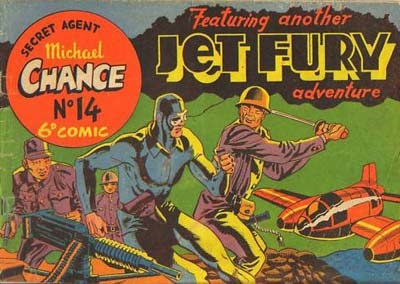
Horak relocated to Melbourne in 1953, and began working for Atlas Publications, which had acquired the comic-book rights to the American newspaper strip, Brenda Starr, Reporter, created by Dale Messick (1906-2005). However, the company handed the artistic reins to Horak with the 14th issue, who drew most of the lead stories until the series ceased publication in 1954. Horak’s art on Brenda Starr was already showing signs of the brisk, energetic style that would become his trademark “look” in decades to come, brilliantly complemented by his cinematic panel compositions.
Horak’s final series for Atlas Publications proved to be his most controversial. The Mask – The Man of Many Faces starred a mysterious, elusive crimefighter, who could alter his blank, skull-like face to resemble any man, living or dead, which allowed him to penetrate the secretive worlds of organized crime and international espionage in his pursuit of justice. The comic was an immediate success, but it ran afoul of Queensland’s Literature Board of Review, which objected to the character’s full-face mask, and imposed a state-wide sales ban on the comic, thus forcing Atlas Publications to reluctantly cancel the title with its third issue in 1954.
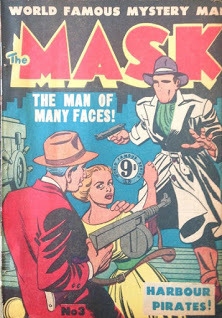
Disillusioned by the experience, Horak gradually withdrew from the comic-book industry and began focusing his energies on the more lucrative newspaper comic-strip field. Horak created history with his debut newspaper feature, "Captain Fortune", which became the first Australian comic strip to be adapted from a local television program. Captain Fortune was a children’s variety program, hosted by a fictitious mariner played by veteran stage and radio actor, Alan Herbert (1913-1966), which aired on ATN-7 between 1956-1961. Horak turned "Captain Fortune" into a suspenseful adventure comic aimed at adult readers, which appeared in Sydney’s Sun-Heraldnewspaper from December 1957 until July 1962.
Emboldened by this success, Horak created a new adventure comic strip, "Mike Steel, Desert Rider", for Woman’s Day magazine. The protagonist, Mike Steel, was a mounted trooper who brought law and order to the desert wilderness of Central Australia. The series, written by Woman’s Day editor Keith Findlay (under the pseudonym “Roger Rowe”), made its debut as a full-colour strip in August 1962, but was shortly converted into the black-and-white format that was retained until the series’ conclusion in January 1969.

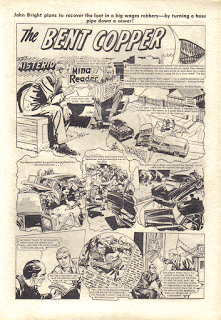 Horak moved to England in 1963, and began drawing strips for D.C. Thompson’s weekly adventure comic, The Victor. One of Horak's earliest known serials was 'Johny Hop', which chronicled the adventures of Constable Bill Lennox and his Aboriginal tracker companion, Wally Omes, in Outback Australia, and appeared in The Victor throughout July-September 1964. His subsequent serial, "The Bent Copper", was about ex-Scotland Yard detective John Bright, who sought revenge against the criminal who framed him for a crime he did not commit. "The Bent Copper" appeared in The Victor throughout July-August 1965.
Horak moved to England in 1963, and began drawing strips for D.C. Thompson’s weekly adventure comic, The Victor. One of Horak's earliest known serials was 'Johny Hop', which chronicled the adventures of Constable Bill Lennox and his Aboriginal tracker companion, Wally Omes, in Outback Australia, and appeared in The Victor throughout July-September 1964. His subsequent serial, "The Bent Copper", was about ex-Scotland Yard detective John Bright, who sought revenge against the criminal who framed him for a crime he did not commit. "The Bent Copper" appeared in The Victor throughout July-August 1965.Horak’s bold, dramatic style lent itself beautifully to the pocket-sized war comics that were captivating a new generation of British readers, who’d grown up in the shadow of World War Two. Between 1963-66, Horak drew nearly a dozen stories for the War Picture Library and Battle Picture Library series published by Fleetway Publications. These gritty, action-packed war stories – which were exported to Australia and New Zealand and published in translation throughout Western Europe – were in many ways the perfect subject for Horak, who displayed his command of black and white illustrative technique to brilliant effect. His final, belated contribution to the War Picture Library series – published as “The Curse” – appeared in 1971.
By this time, Horak had rented a studio above the El Vino wine bar in London’s Fleet Street, home to many of England’s leading newspapers, which became a magnet for countless journalists, writers and artists. Horak worked in the same building as the British author Peter O’Donnell (1920-2010), who wrote the comic-strip adaptation of Ian Fleming’s spy novel, Dr. No, for the Daily Express newspaper in 1958. O’Donnell, who later achieved worldwide fame as the creator of comic-strip heroine Modesty Blaise, nominated Horak to replace John McClusky (1925-2006) as the permanent artist on the James Bond comic strip, which had resumed publication in the Daily Expressin 1964 (The series recommenced after a two-year hiatus following the resolution of a contractual dispute between Ian Fleming and the British newspaper magnate, Lord Beaverbrook).
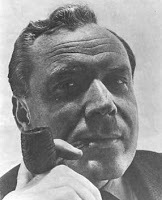
The American novelist and journalist Jim Lawrence (1918-1994) and Horak (pictured right, circa 1960s) made their joint debut on James Bond with their adaptation of “The Man with the Golden Gun”, which appeared in the Daily Expressthroughout 1966 (Two episodes are reproduced below). This marked the start of their decade-long collaboration, which saw them recast James Bond as a tough antihero, completely at odds with Roger Moore’s droll screen portrayal of the character, but who was in many ways closer to the spirit of Ian Fleming’s earliest “Bond” novels (There is an interesting discussion/analysis of Horak's work on the "James Bond" comic strip to be found on the Dave Karlen Original Art Blog, dating from August 2008).
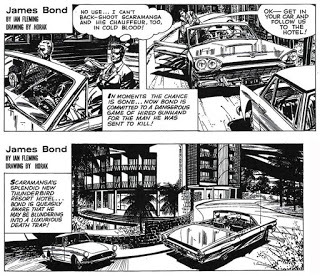
Horak worked and travelled throughout Europe for several years, before eventually returning to Sydney in 1975. Even after the Daily Express dropped the James Bondcomic strip in 1977, Horak and Lawrence continued to produce new James Bond stories for the Scandinavian market, where it continued to appear in newspapers and comic magazines until the mid-1980s. Ironically, a new Australian television show brought Horak back to the pages of Sydney’s Sun-Heraldnewspaper in 1980. Cop Shop was a popular police drama, produced by Crawford Productions, which aired on the Seven Network between 1977 and 1984. Horak was commissioned to write and illustrate a comic-strip adaptation of the series for the Sun-Herald, where it appeared as a half-page comic strip throughout 1980-83. Three complete stories from Horak’s series were reprinted in a spin-off Cop Shop comic magazine, which was released nationwide in 1983.
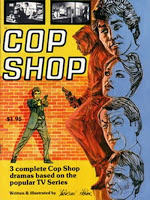
Horak’s last published work fulfilled his lifelong ambition to create his own comic strip. Andea was a science-fiction serial about a glamorous female extra-terrestrial who travelled to Australia from the distant planet Xavax. The Daily Mirrorlaunched Andea as a weekend comic strip in September 1980, no doubt hoping it would prove a worthy match to Roger Fletcher’s science-fiction strip, Staria, which had been a popular mainstay at the Daily Telegraph since 1977. Andeashowcased Horak’s storytelling skills to brilliant effect, with his intricate plots, fantastic characters, and exquisite artwork demonstrating his complete mastery of the medium throughout the series’ seven-year run. It was a fitting end to Yaroslav Horak’s incomparable career as one of Australia’s great comic artists.
Yaroslav Horak was subsequently awarded the Ledger of Honour in recognition of his contributions to Australian comics, as part of the Ledger Awards for 2018 (He was a joint recipient with fellow Australian comic artists, Kathleen and Moira Bertram. Readers can download the 2018 Ledger Awards Annual, which also features a profile on Horak's life and work). The Australian Cartoonists' Association published a lengthy interview with Horak in their Inkspot journal (No.59, 2009), which can be viewed online here. Horak is survived by his Jacie, and his children, Anton, Damon and Natascha.
Images reproduced here were sourced from the following websites: Ausreprints.net; Dave Karlen Original Art Blog; Pikitia Press; The Victor-Hornet Comics; Qwizzeria; Tebeosfera;



